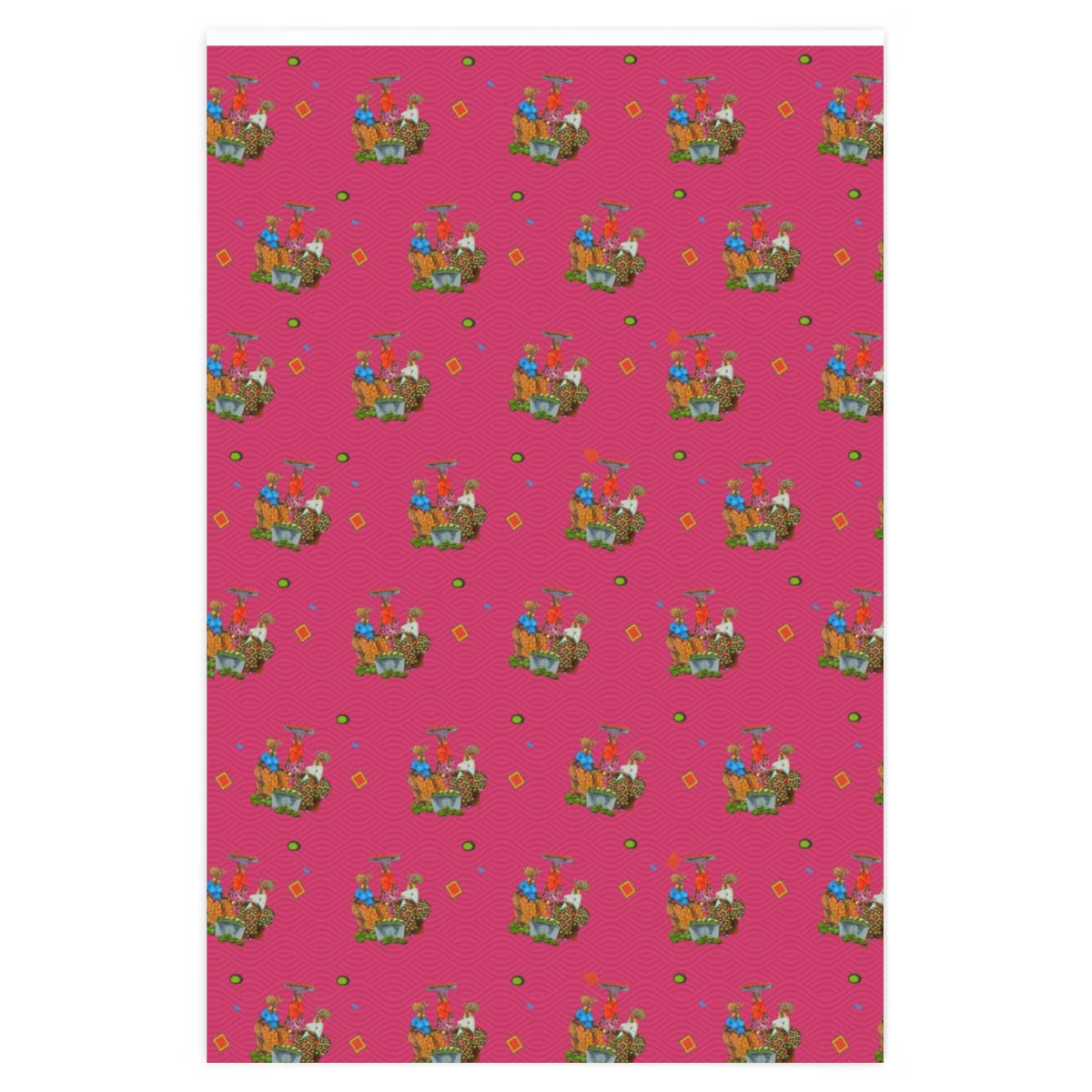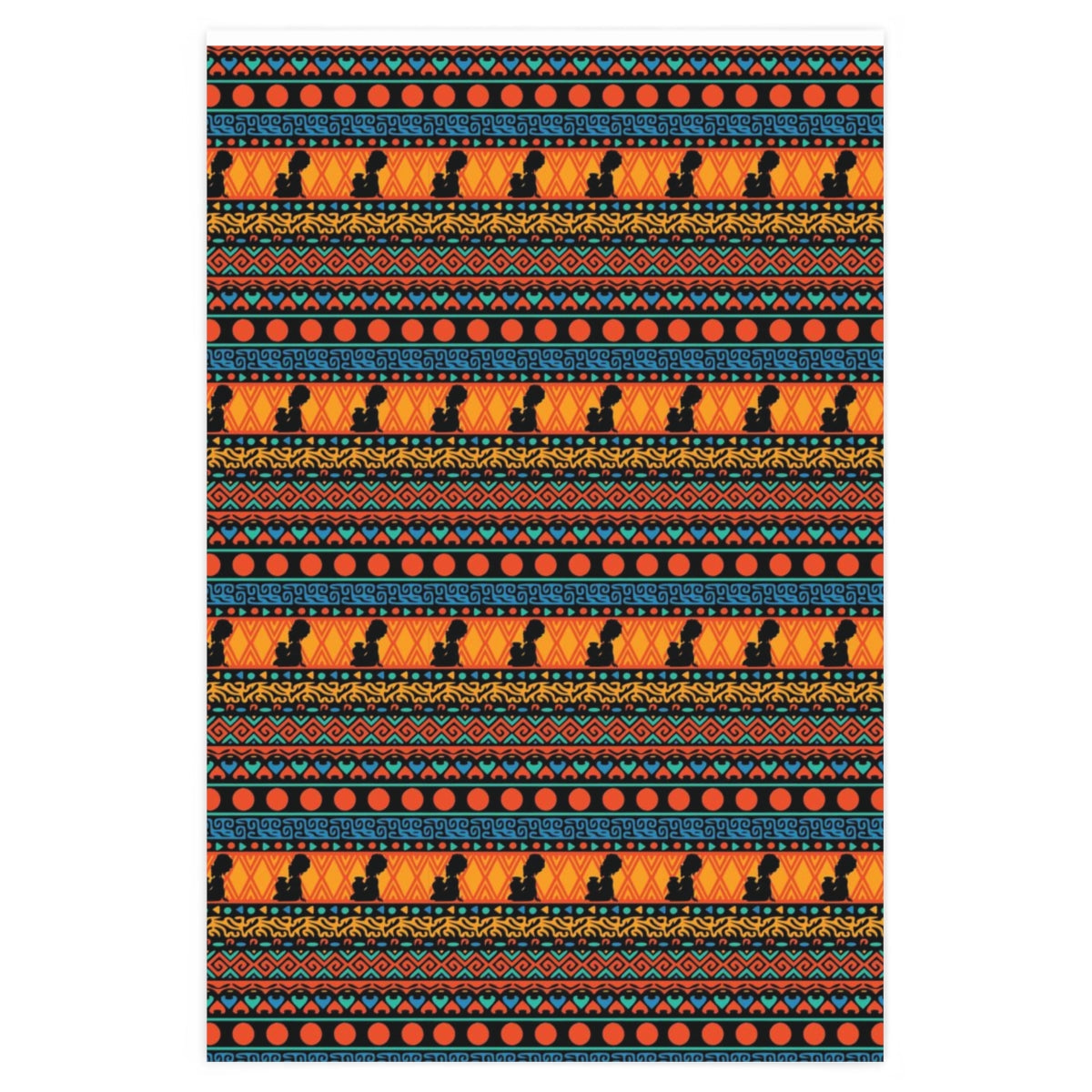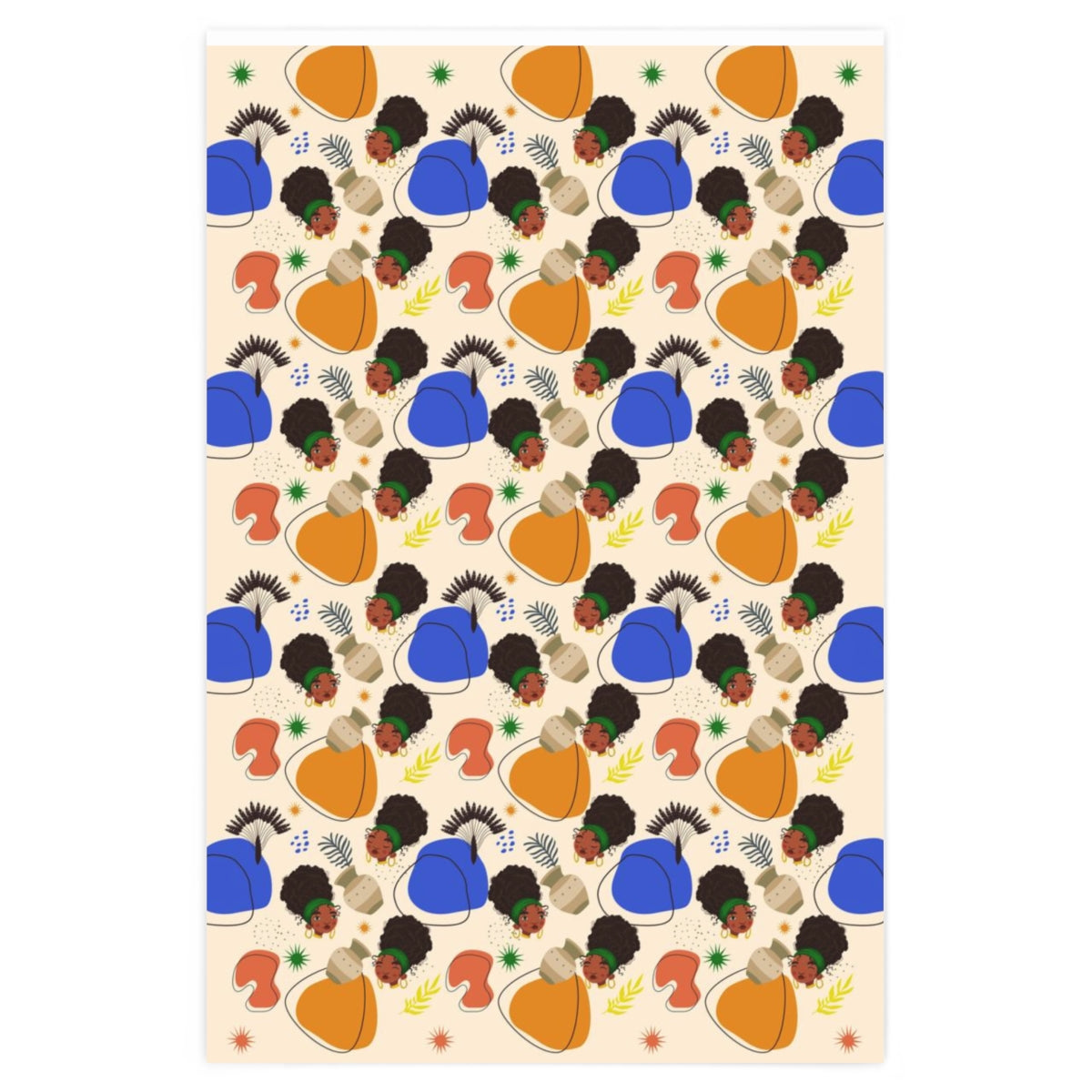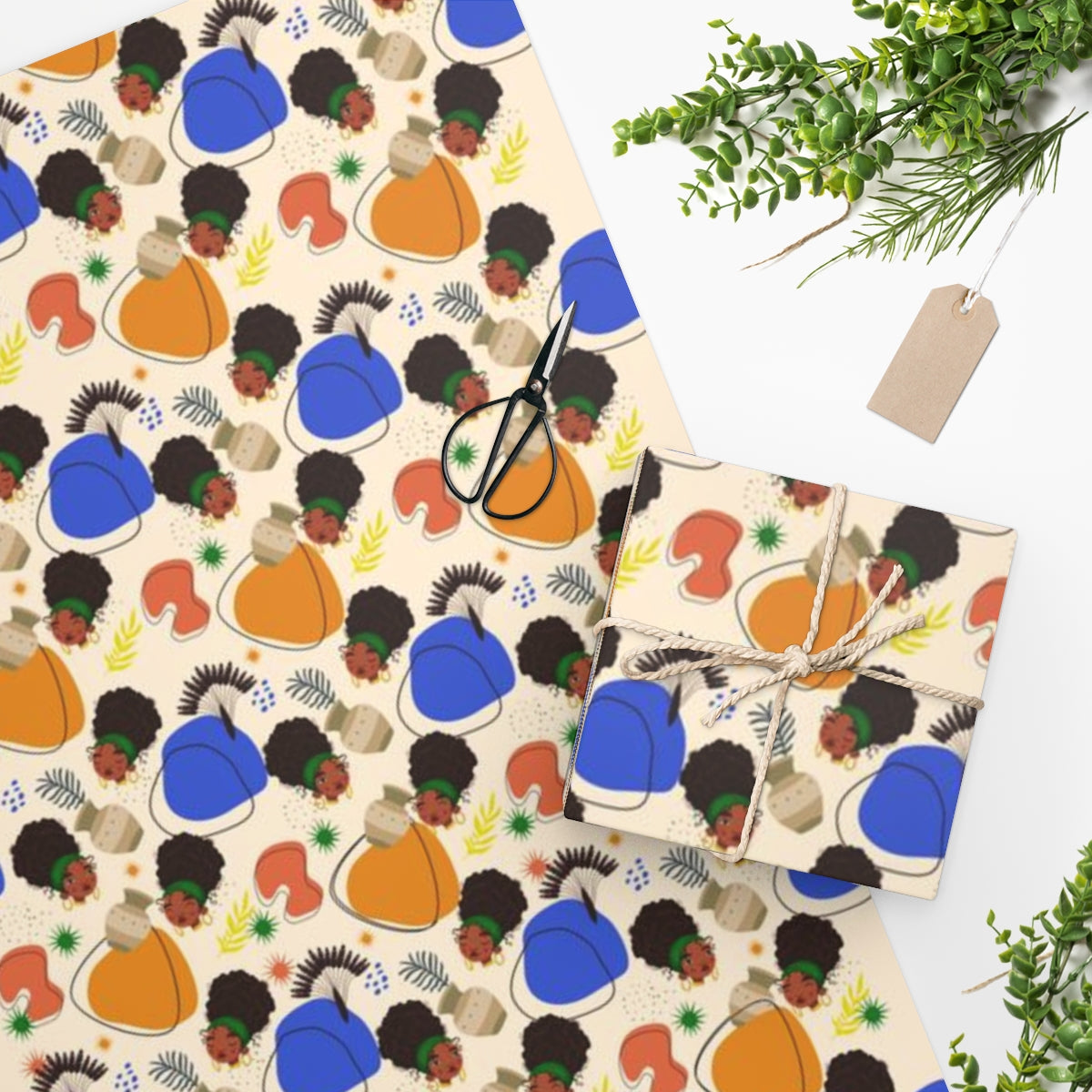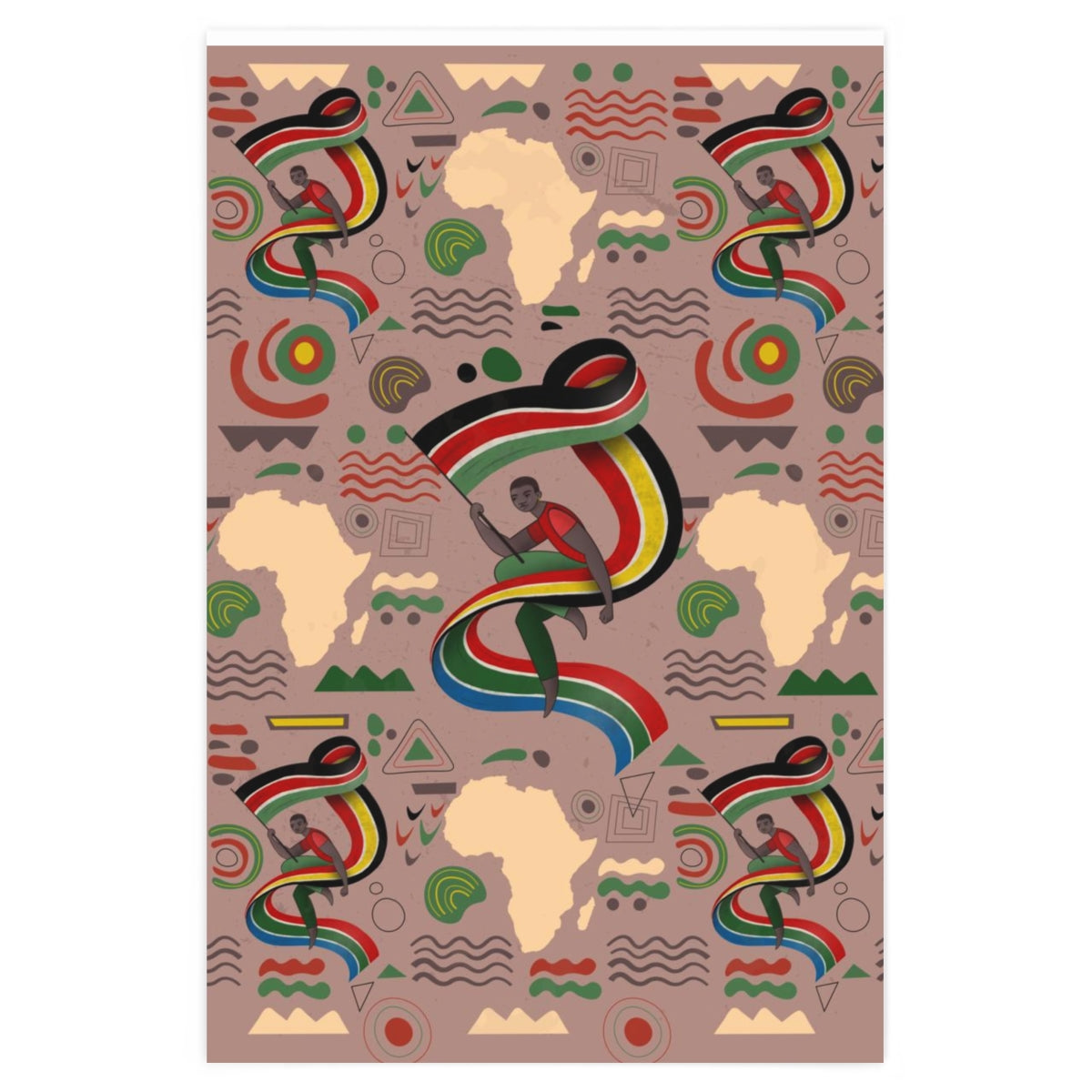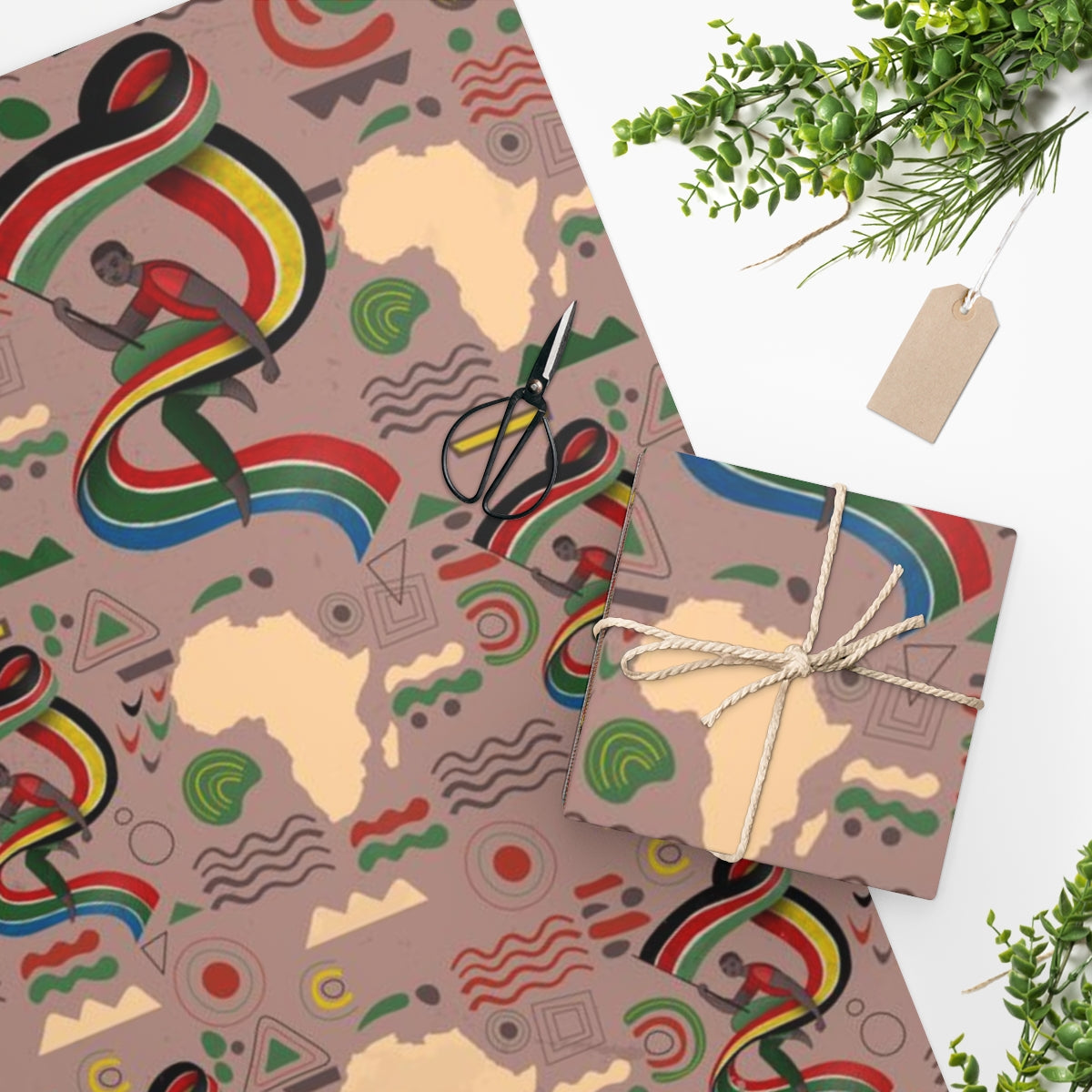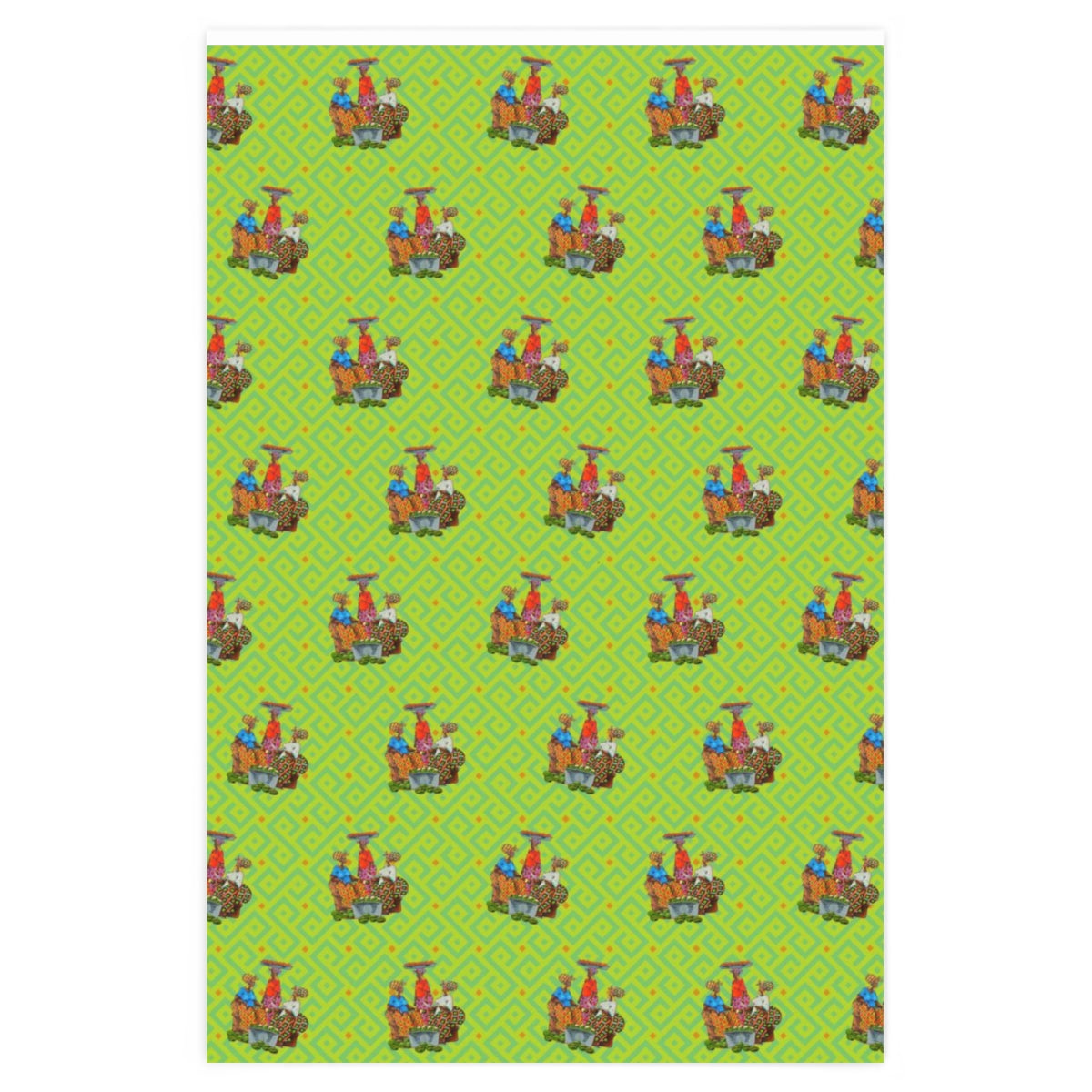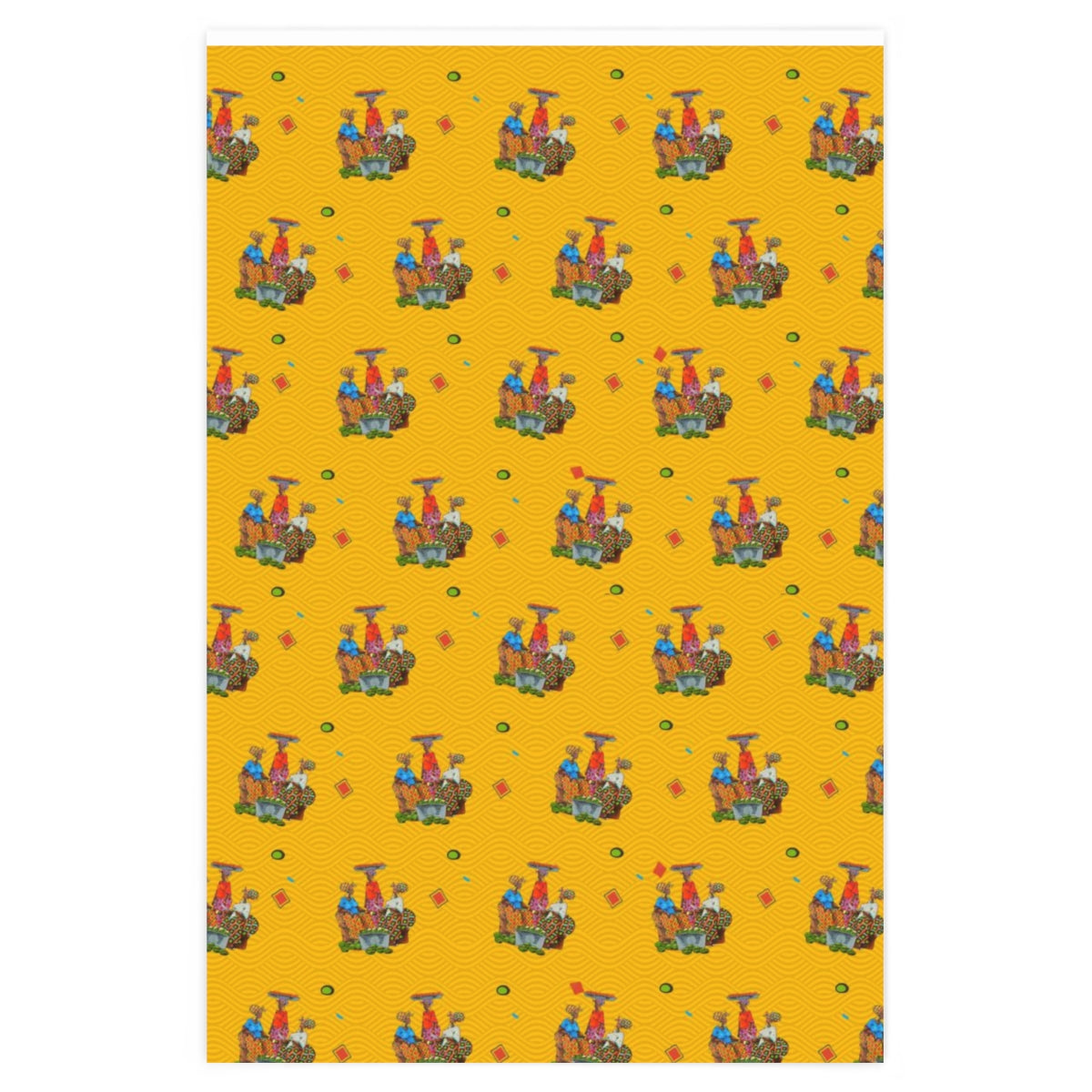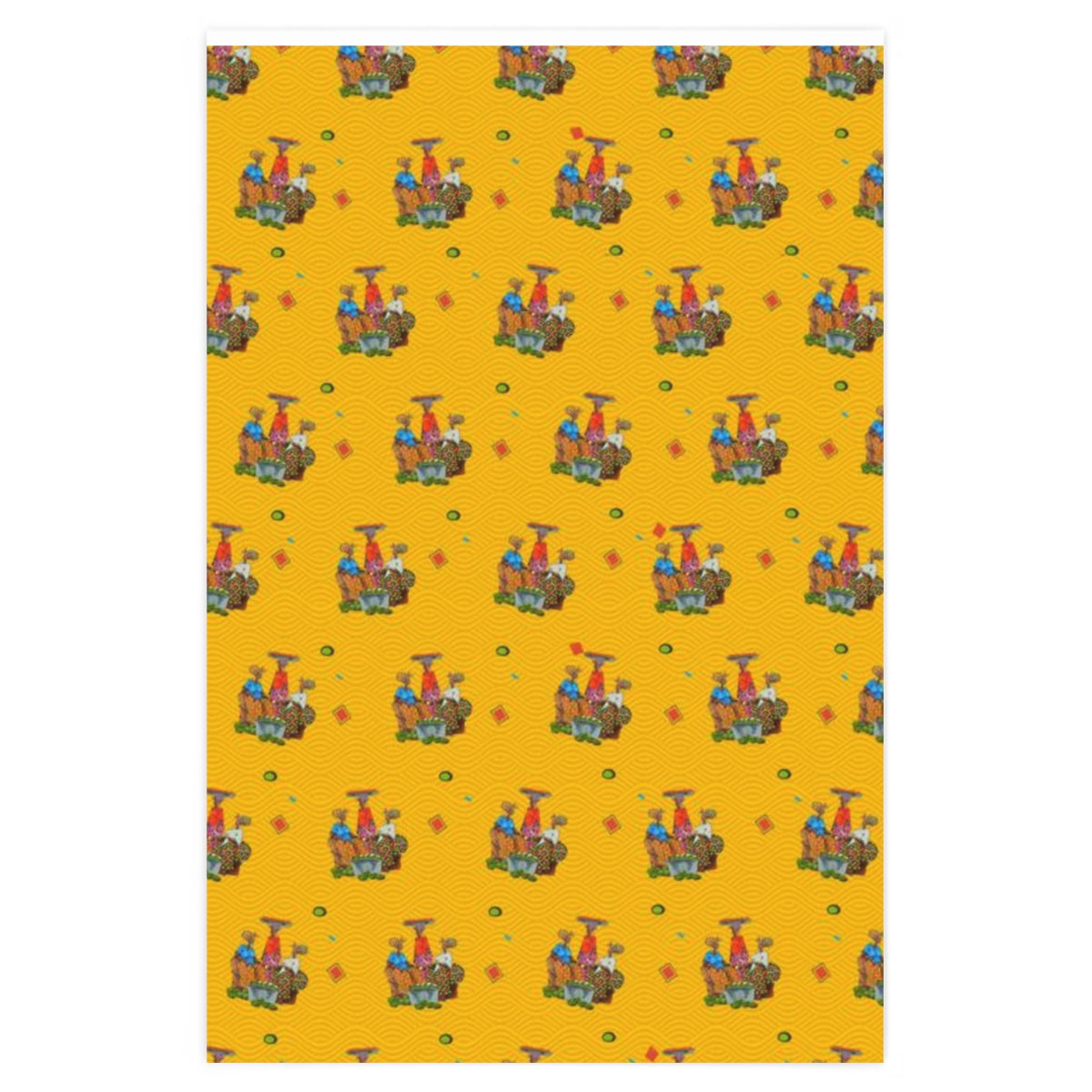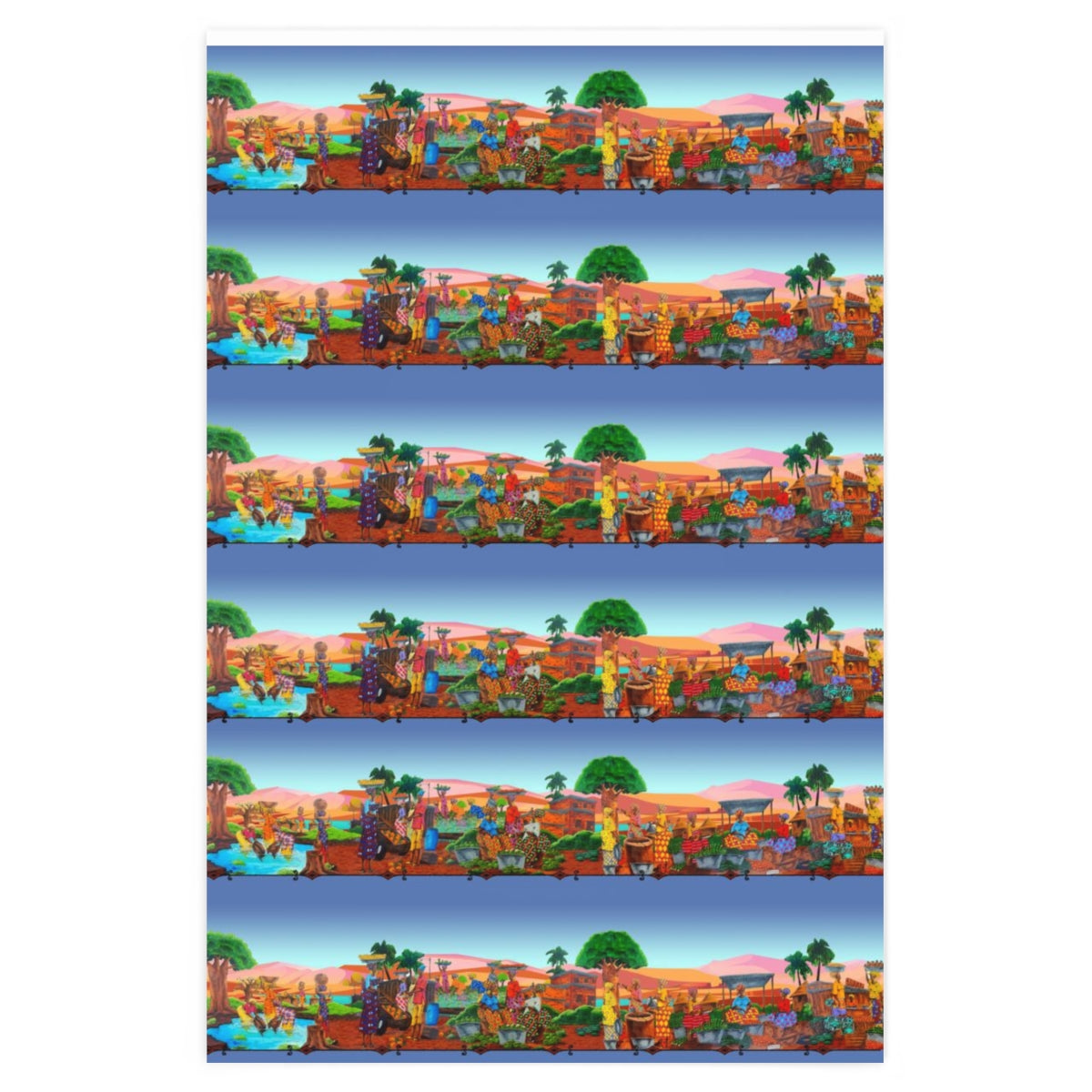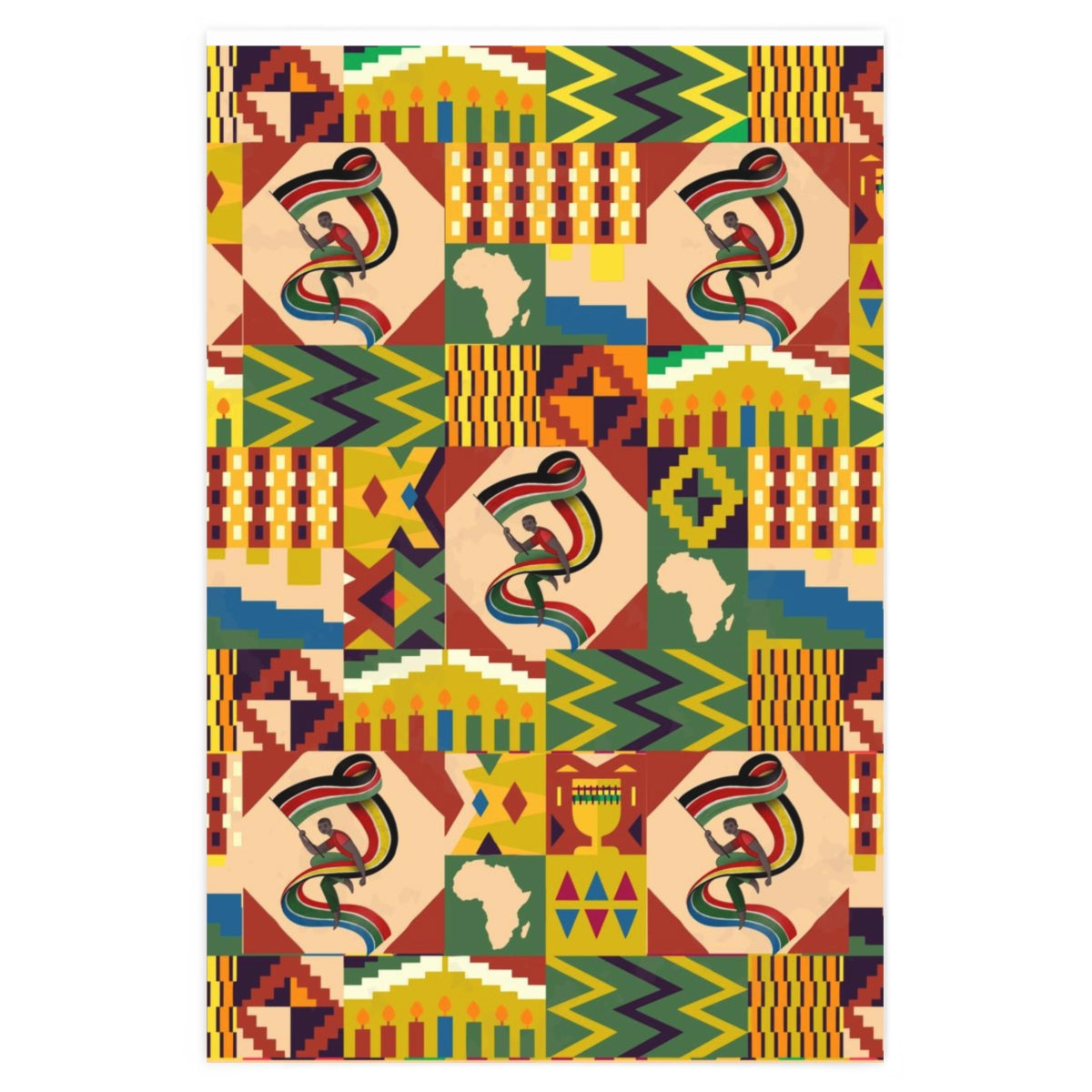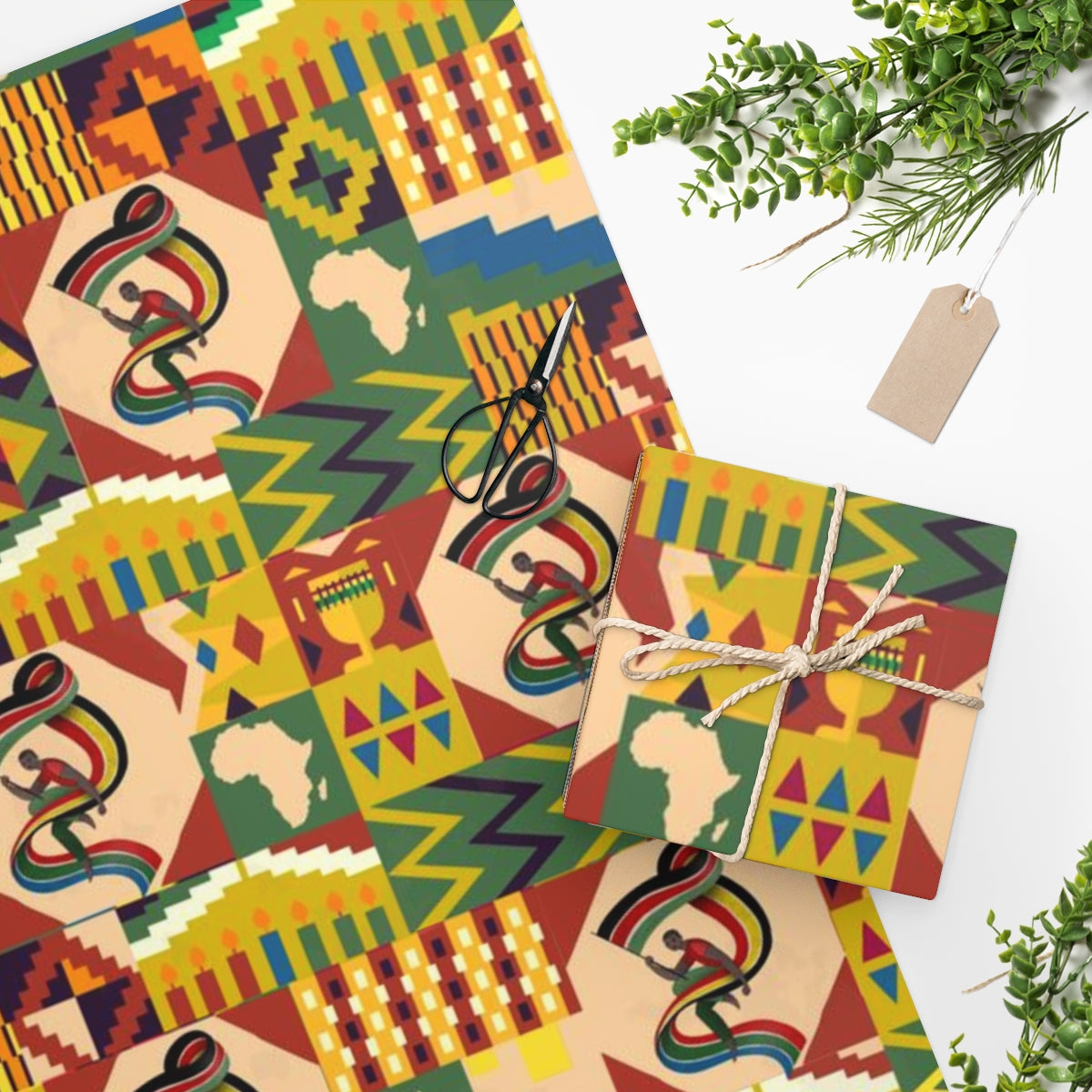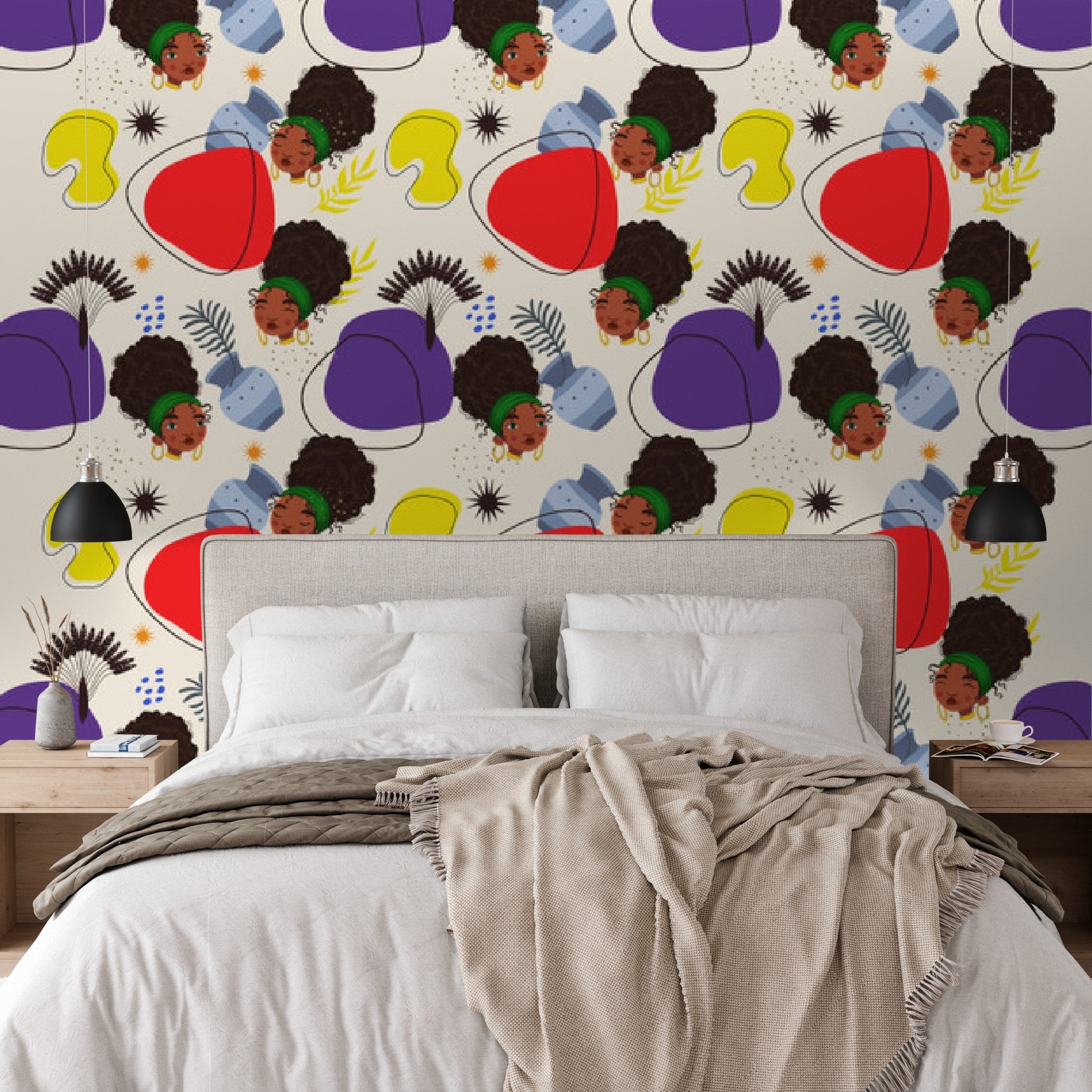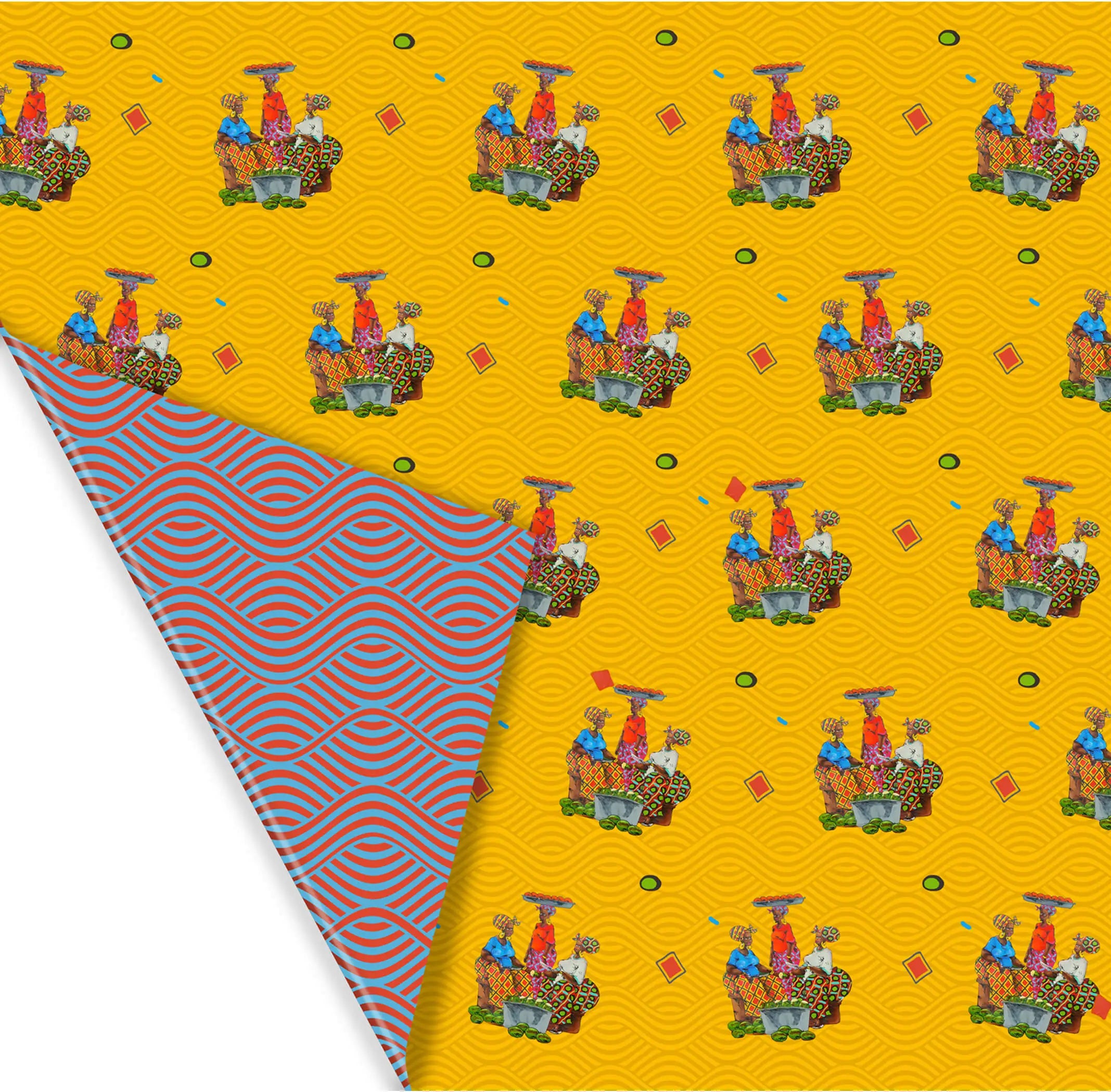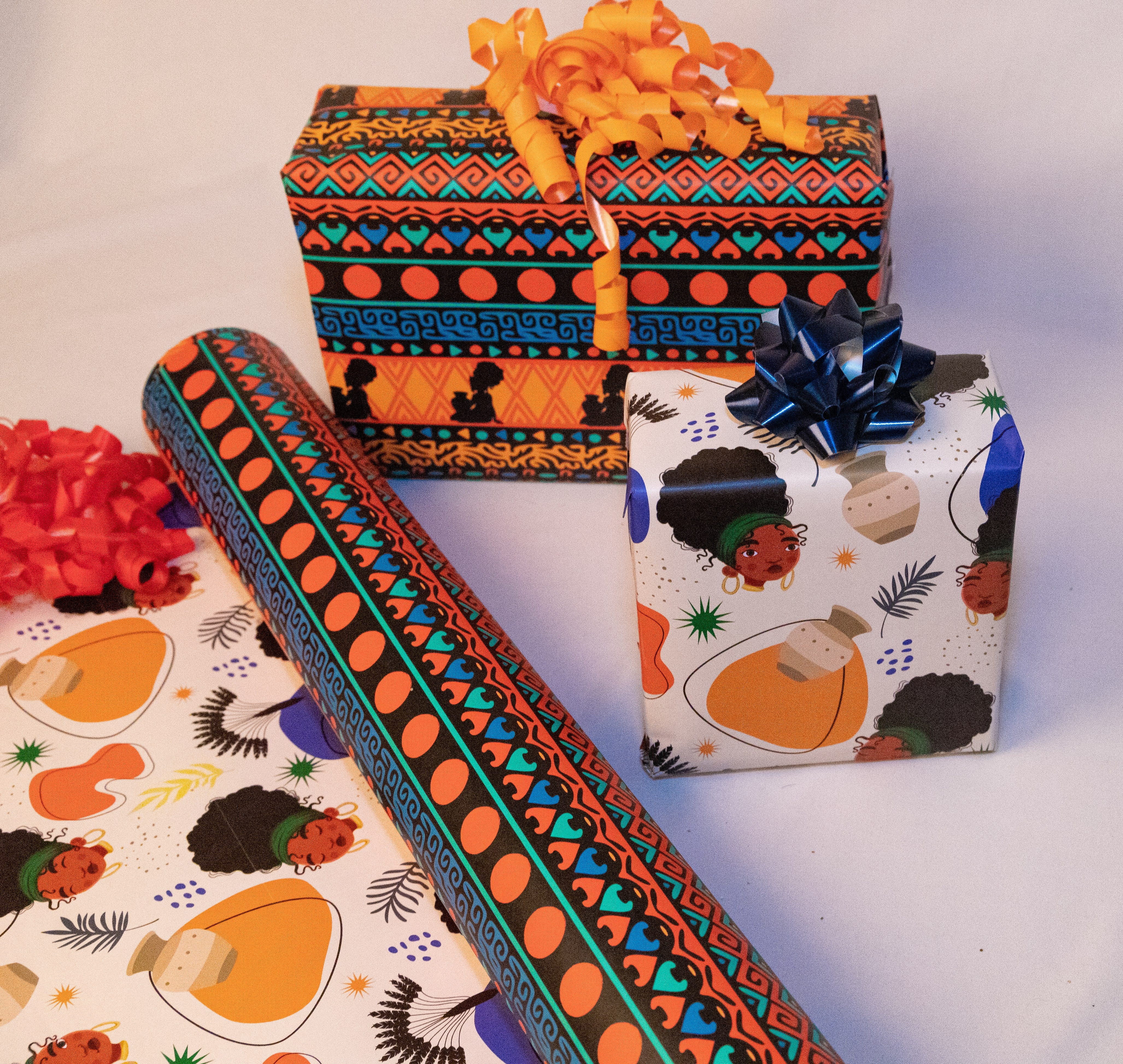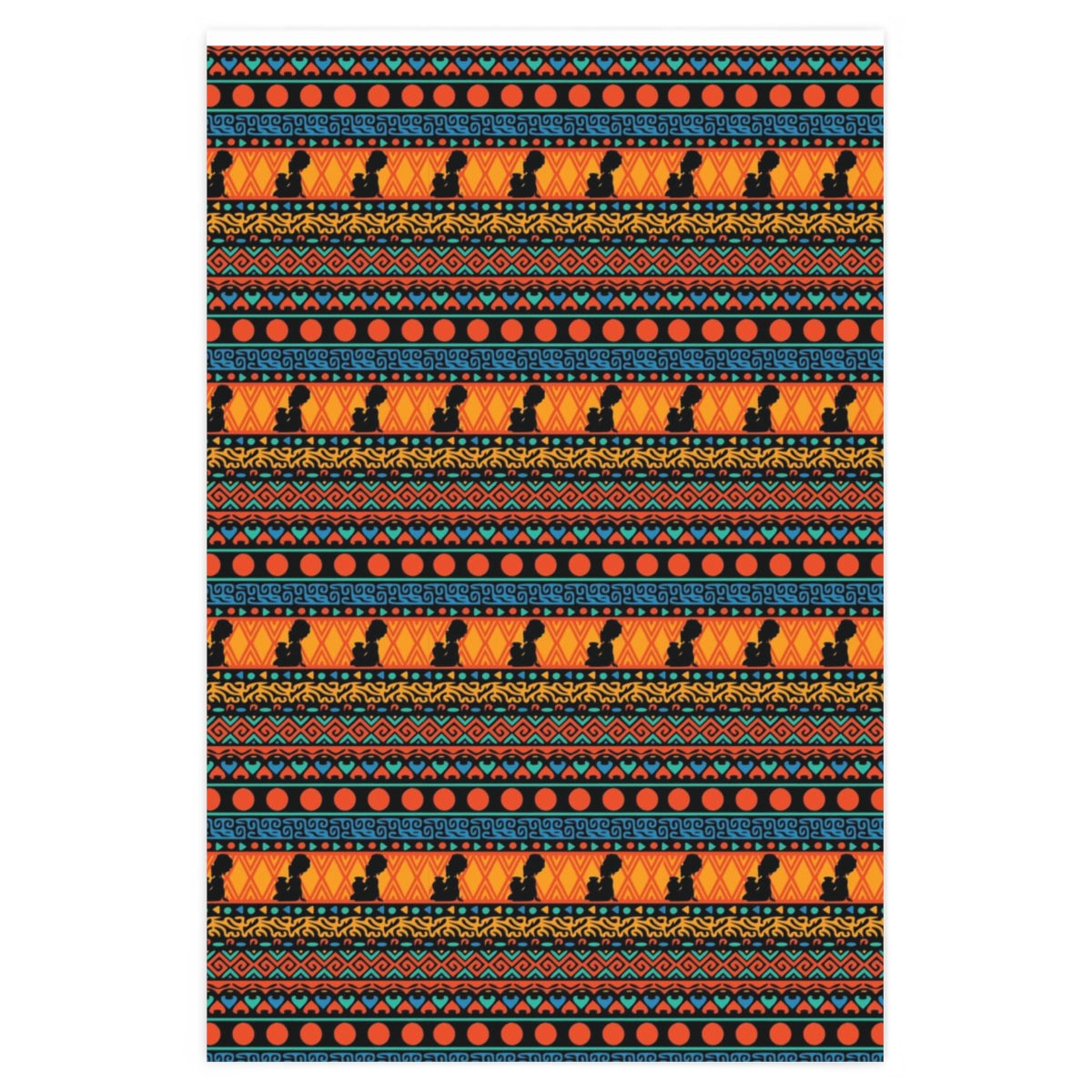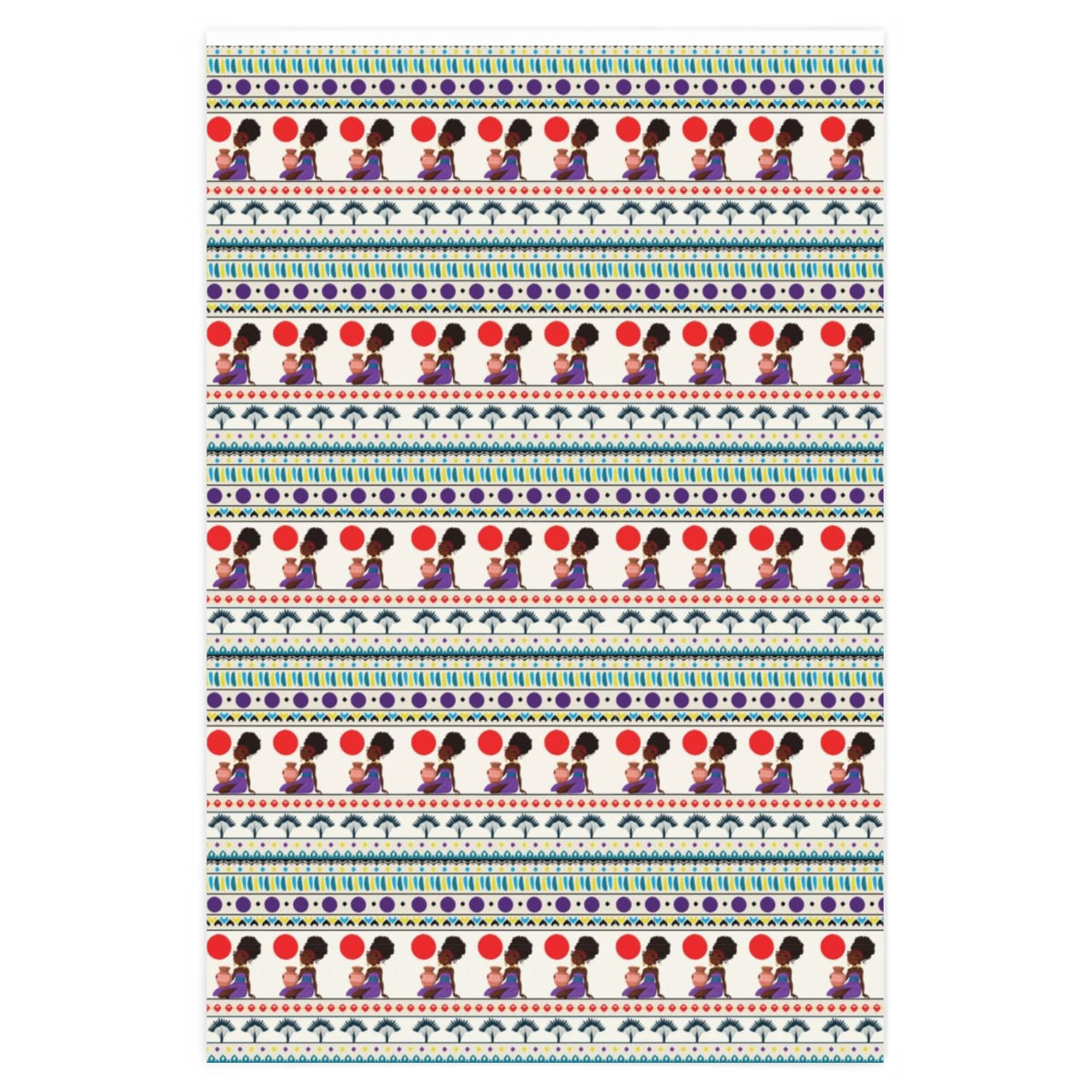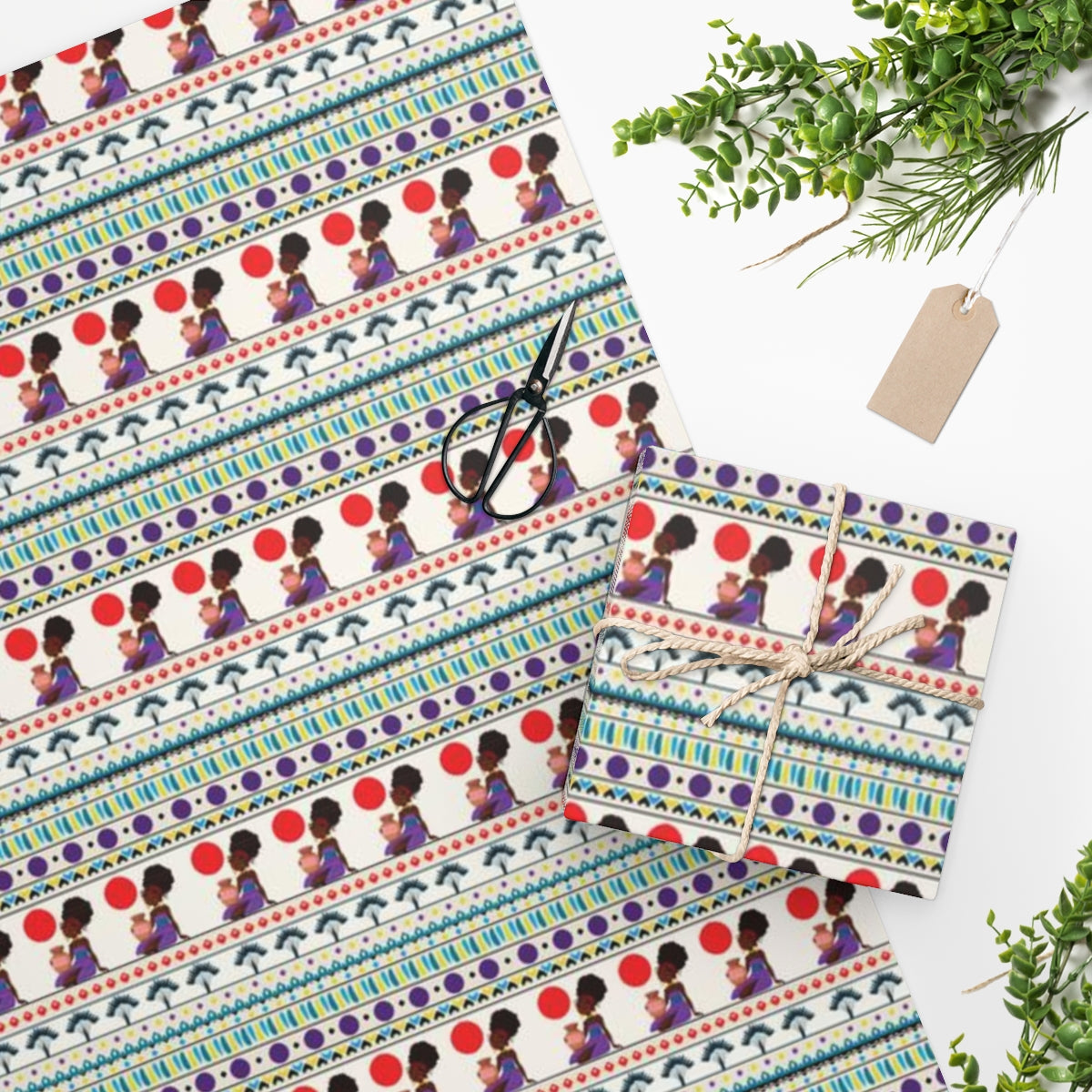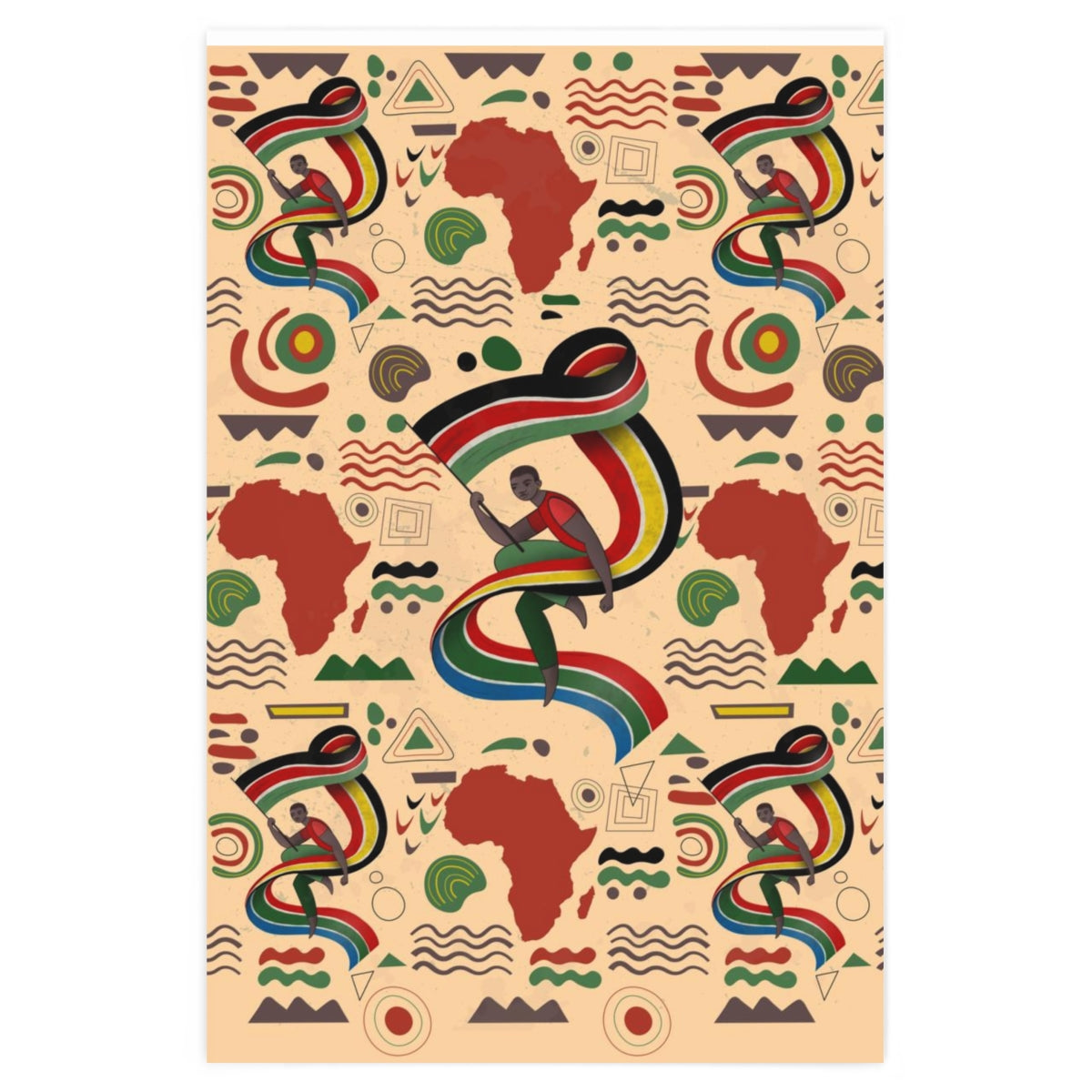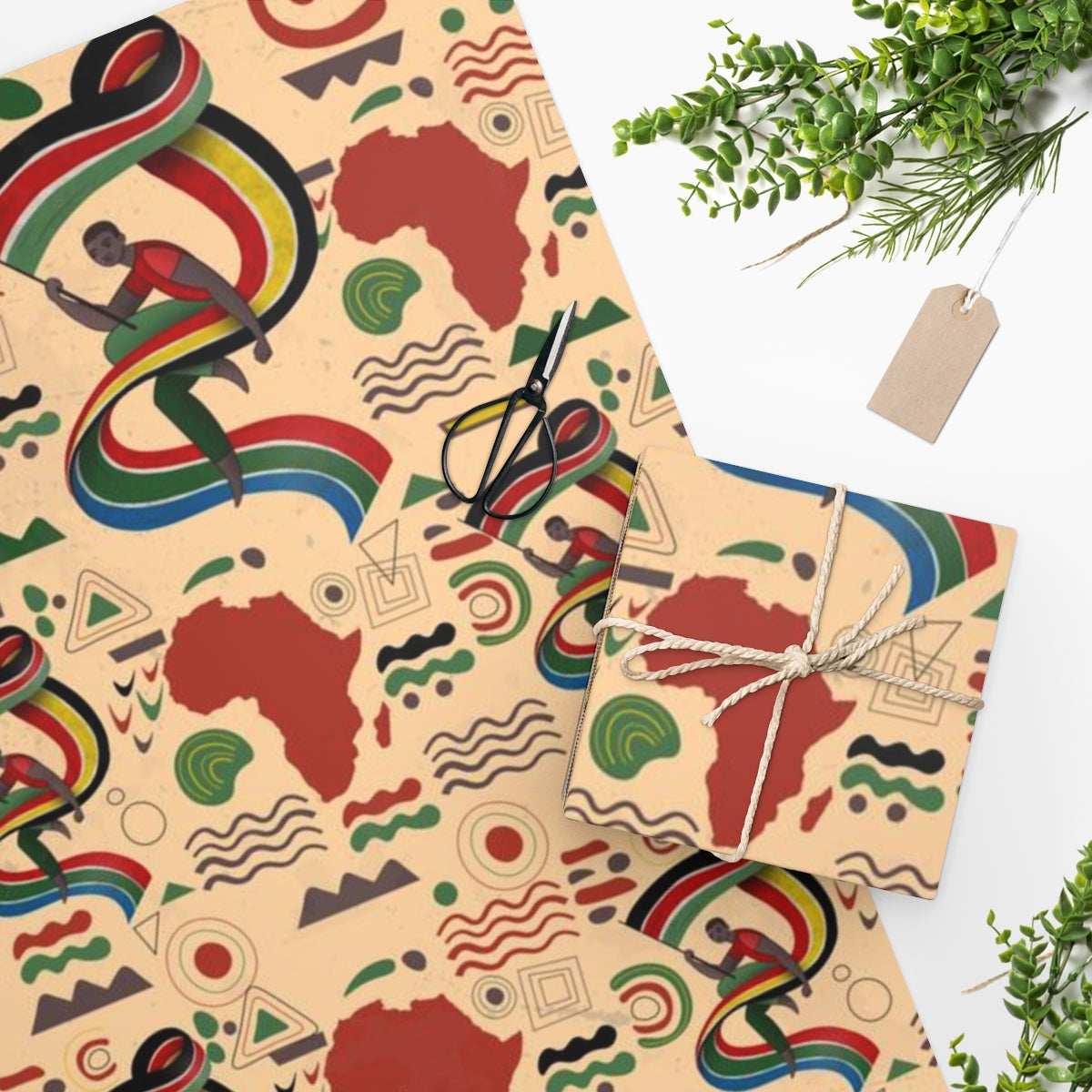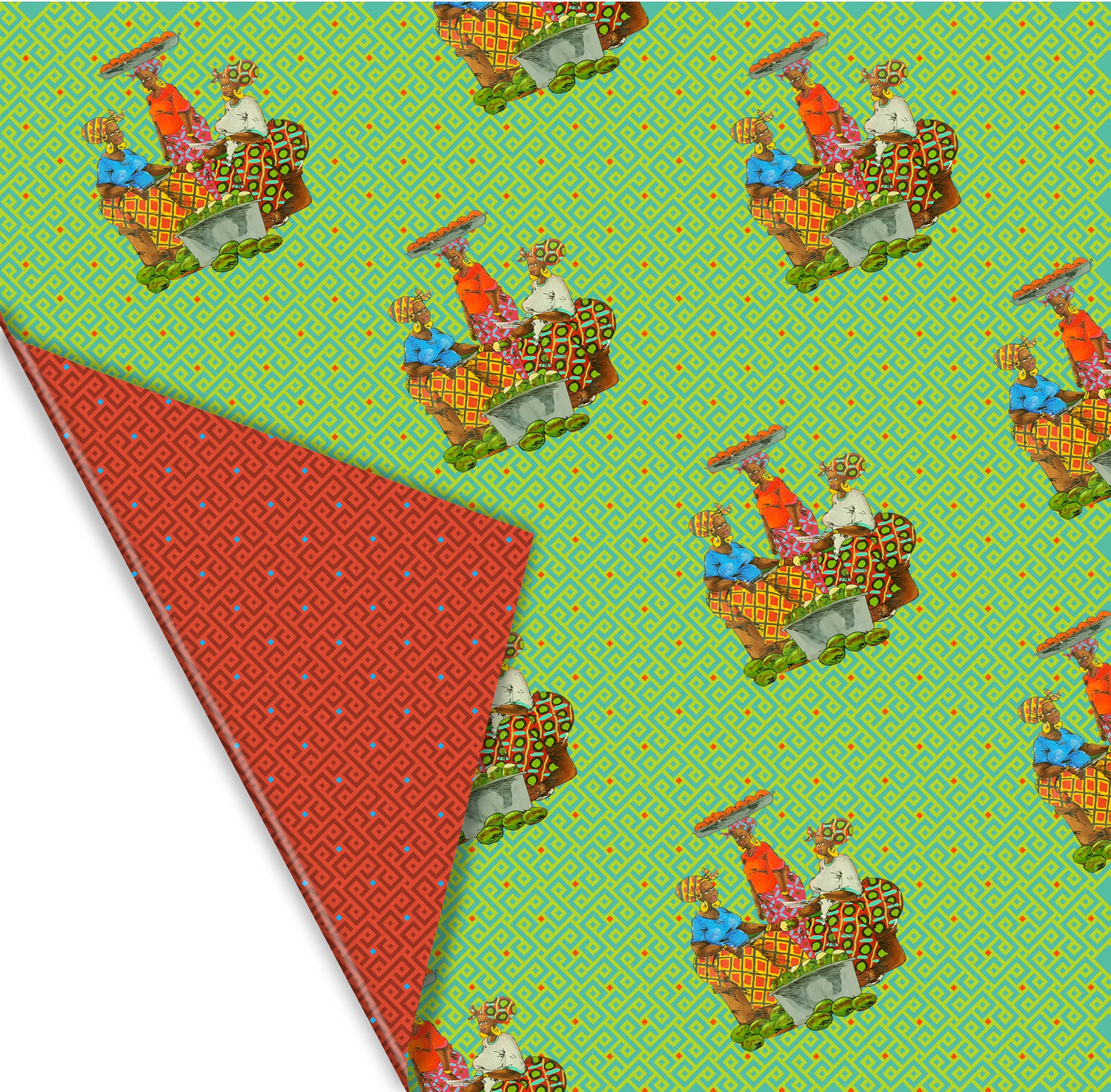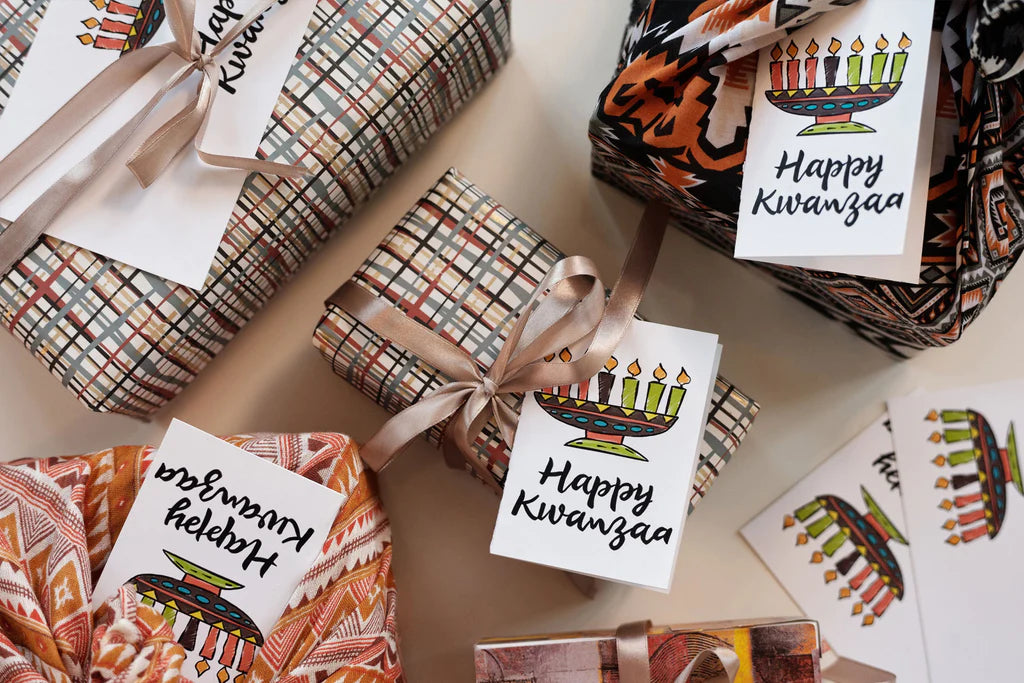
A WHIRLWIND OF SHADES: AFRICAN USE OF COLOR.

A WHIRLWIND OF SHADES: AFRICAN USE OF COLOR.
"Without black, no color has any depth." – Amy Grant.
The mere mention of the words "African Art" t brings forward imageries of elongated wood and clay masks, as well as natural shades with brown undertones and geometrical patterns. However, changing the phrase for the more ambiguous "African colors" may paint a different picture—one that is red, black, green, and yellow.
These two prevalent imageries in the collective consciousness have defined what we consider African art and African colors. However, although not wrong, it is a very limited imagery that does not explore the continent's rich and vast art scene.
Particularly, the vibrant use of color within Africa.
Pan-Africa and what we consider African colors:
The association of green, red, black, and yellow with Africa is not unfounded, as they are considered the Pan-African colors.
Most of these colors are derived from the historical Ethiopian flag—stripes of red, yellow, and green—as the nation could mostly resist European colonization and became a symbol for the rest of the continent. Since then, many countries have incorporated the color scheme within their national flags as a sign of independence.
Despite not being part of the Ethiopian flag, the black color has also joined the iconic combination. It is thanks to Marcus Garvey and the Universal Negro Improvement Association and African Communities League, which created the Pan-African Flag, composed of red, green, and black, the latter representing the dark skin color of the people.
From both sources, the four colors often group together to symbolize Africa, African diaspora like African-Americans or Afro-Caribbean's, and African-oriented movements and religions such as Rastafarianism.
The deep symbolism behind each color makes it impossible not to appreciate and value the meaning they carry for Africa and the importance of Pan-African sentiments and values. The sense of unity is uniquely essential.
However, considering these colors the only means for African color expression makes it hard to appreciate the continent's rich usage of color. From an art perspective, there is a lot more to understand beyond these four shades.
The richness of African color.
Color usage in Africa is symbolic and valuable, and appreciating the multiple shades and tones is a way to glance at history and culture in equal parts.
Each area and country has a specific take on this concept, but they all agree on the importance of color symbolism and pattern usage. As such, colors are more than just that—they represent history, spirituality, medicine, beauty, or any combination of these.
Karen Milbourne, a museum curator of African Art with trajectories at the Baltimore Museum of Art and the Smithsonian National Museum of African Art, explains the usage of color in African art by comparing it with European color.
"In European art, color is generally understood in terms of the primary colors red, yellow, and blue. But throughout much of Africa, the primary colors are red, white and black," she clarifies. "They don't mean the same thing to every group, but they appear over and over again."
The importance of these three primary colors explains the prevalence of warm palettes across historical African art—with red, blue, and black, you can only get reddish hues, and although cooler colors were also prominent, reddish tones clearly dominate the art scene. This is true not in small part thanks to the environment and resources available. Red ochre, for example, has played a quintessential role in multiple cultures, therefore setting precedence for reddish hues.
Contemporary African art and color use.
With current technology and the wide availability of pigments and different types of colors, the limitations of the past have vanished. Nowadays, African artists, designers, and creators have embraced the broad spectrum of color, and therefore their use of shades is profoundly personal and relative to their tastes.
However, some cultural aspects keep prevailing.
The appreciation for warm colors remains, and the love for bright shades and colorful combinations and patterns is prevalent within Africa and the African diaspora. Likewise, the importance of color-coding and symbolism behind each shade remains prevalent yet differs vastly between countries, regions, and cultures.
In short, African use of color is as varied and bright as the continent itself.
THE AFRICAN MEANING BEHIND COLORS AND SHADES.
After having established the richness and profound meaning of color within Africa, there is only one question left to ask.
What is, exactly, that important meaning? Well, the answer is as varied as the continent itself.
Africa is not a monolith, and, as such, the many different cultures have wildly contrasting interpretations of color, their meaning, and importance. However, there is valuable overlap—not only between themselves but also with traditional European or Asian traditions.
White.
The cultures across Africa are no different than the rest of the world in that they also conceive white as mostly symbolizing purity. Associated with spiritual purity and cleansing, the color white can be found across religious and festive occasions throughout the continent.
However, many other cultures also associate white with the otherworldly, the spirit world of ancestors. Karen Milbourne, a museum curator specialized in African art working for the Smithsonian, highlights how white can symbolize the purity of young women for the Igbo people in southeast Nigeria.
Black.
Dark and mysterious, black boasts of many meanings across different cultures within Africa. For example, a prominent symbolism found across West Africa is that black symbolizes spiritual energy and maturity.
Likewise, the color has been historically associated by the Ibibo people in Nigeria with taboo—the behavior no individual should engage in within society. In the same trend, black may also be the color of evil or death and mourning.
However, contemporary interpretations of color interpret black under a more positive angle, associating it with the dark skintone of most African people and reclaiming it as a symbol of the continent, thus including it in the Pan-African symbols and flags.
Red.
As one of the most appreciated hues in Africa, the color red is prominent across the continent.
The Pende people in Congo perceive red as an utterly masculine color, symbolizing the blood spilled on the battlefield. Contrastingly, the Urhobo people of Nigeria believe red to be a feminine color associated with the beauty ideals of a young wife. Somewhere between both conceptions is that of Sierra Leone's Bullom people, who believe red is the color of the blood lost on the battlefield and during childbirth.
A similar meaning can be found in contemporary African sensibilities. Red represents the bloodshed shed by Africans in the fights for liberation against oppression, turning it into an empowering yet mournful color.
Yellow.
A common meaning for yellow across African cultures is the association with wealth and royalty, something that is relatively common even outside of the continent. For example, a Kente cloth from Ghana in a yellow shade would represent wealth and riches, alongside preciousness and even beauty.
It is precisely because of this association that in some cultures it used to be custom to only allow high-ranking members of society to wear the color.
Green.
The color green is the one you see and nature, and nearly every culture across the world associates it with plants, harvest, fertility, and growth. African cultures are, of course, not the exception.
But beyond the usual association with harvest and nature, the color green also symbolizes growth—both the one seen in nature and spiritual growth and healing. Nowadays, the Pan-African interpretation of colors considers green to symbolize the rich and vast lands of Africa.
Blue.
Considered a peaceful shade, blue is often considered the color of love and harmony, thus its importance as a color in fabrics used for clothing such as shweshwe.
However, it is a color often associated with nature. You can see this conception in the Botswana flag. The predominantly blue palette gives it a calm atmosphere, and the shade itself represents the rains that often cover the land and becomes the source of light.
Purple.
Despite the vast differences you can find across the continent, the color purple has historically been considered a feminine shade associated with womanly charms, strength, and beauty. This is particularly prominent in traditional fashion and clothes, for example, clothing made with Kente.
Likewise, it also became a symbol of royalty.
But tradition is not all.
Although this traditional conception of color remains prevalent across Africa and in the minds of Africans, it has expanded beyond that. Nowadays, artists can infuse any meaning they want in each shade they create, and African artists keep finding new symbols in each tone.



